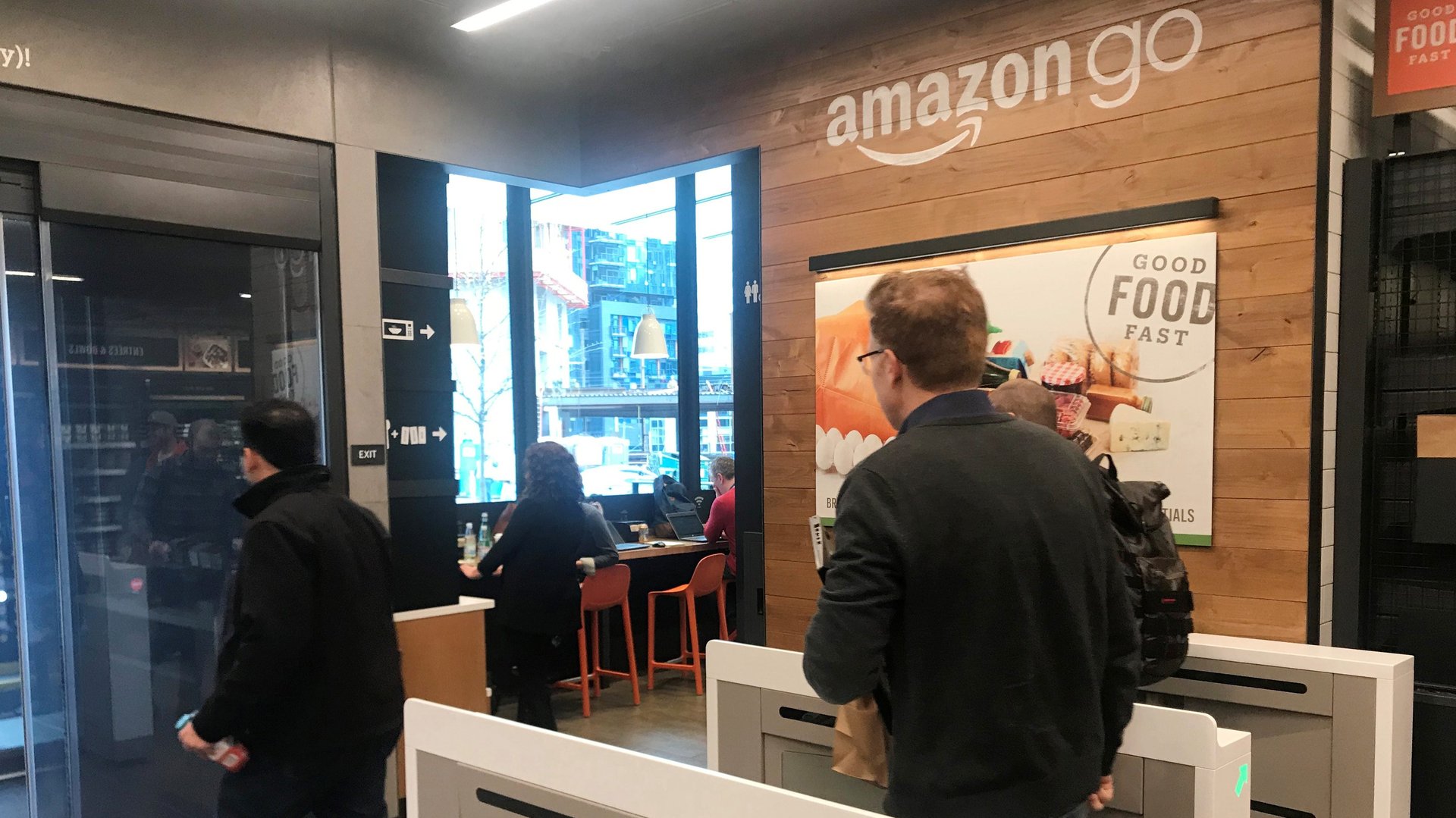Amazon’s AI-powered grocery store is opening to the public tomorrow
The 3.5 million Americans who make a living as cashiers should keep their eye on an experiment underway in Seattle, Washington.


The 3.5 million Americans who make a living as cashiers should keep their eye on an experiment underway in Seattle, Washington.
Amazon Go, a much-anticipated grocery store in the e-commerce giant’s hometown, will open to the public tomorrow (Jan. 22). The futuristic store doesn’t have cashiers or self-checkout machines; instead a customer scans a code on the Amazon Go app to enter, and then is tracked around the store as they pick up items. The items they leave the store with are tallied up and charged to their Amazon account.
Amazon Go is possible due to recent advances in artificial intelligence and camera technology. The AI algorithms can now watch the various video feeds and identify who is picking up an item, and which item they’re picking up.
The project, which has been beta tested by Amazon employees for a little more than a year, was reportedly delayed in 2017 due to the complexity of tracking crowds of fast-walking humans. The store’s tech didn’t work when more than 20 people were inside or were moving too fast, the Wall Street Journal reported.
Journalists from MIT Tech Review, Recode, the New York Times and USA Today were given access to the store ahead of the launch, and did not report any problems with the way the tech works. USA Today’s Elizabeth Weise does say that Amazon is capping the number of people the store can hold at 97. The NYTimes’ Nick Wingfield even tried to shoplift a 4-pack of soda, but when he walked out the store charged him anyway.
On the shelves, reporters found typical grocery store fare, like snacks and pre-made sandwiches for lunchtime office workers, but also Amazon-made meal kits and Amazon food brands such as Wickedly Prime. The store also has a small wine and beer section, where IDs are checked by a human Amazon employee.
It’s unclear how this technology will play out in the workforce. While experts caution that industries that face automation often end up adding more employees over time, a Quartz analysis found that Amazon is killing more jobs than it is creating.